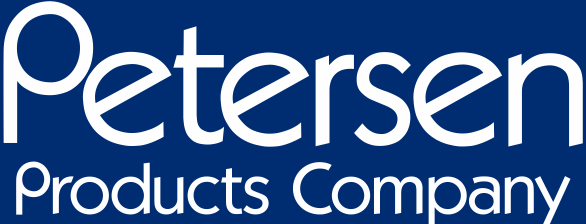How to Choose the Right Pipeline Isolation Method for Your Needs


Pipeline isolation is essential to safe and efficient maintenance, testing, and repair activities. Isolating portions allows work to be conducted without impacting the entire system or risking personnel safety. There are various pipeline isolation methods available tailored specifically for different applications and pipeline circumstances - these will depend on factors like pipeline size, pressure and type of work being completed for efficient and secure operations.
Pipeline Isolation: Purpose, Key Benefits and Best Practices for Safe Operations
Pipeline isolation is a vital tool for safely isolating pipeline sections to enable repairs, testing, or modifications without disrupting the entire system. Isolation plays an especially essential role when maintaining hazardous substances transported in pipelines as it helps contain and control flow within specific areas.
Pipeline isolation offers several key advantages. Workers are exposed to less dangerous materials; environmental protection improves by minimizing spills or leaks; compliance with regulatory standards is improved as leakage risk is diminished; as well as more efficient operations thanks to reduced downtime in unaffected pipeline sections that helps sustain production.
Selecting an isolation method appropriate to your pipeline size, pressure levels and operations type can bring great rewards. Proper pipeline isolation provides both safety and efficiency benefits that enable seamless maintenance operations in industrial as well as commercial settings.
Types of Pipeline Isolation Methods
Pipeline isolation is an integral part of maintenance and repair work, and several methods exist to effectively and safely isolate pipelines. Below is a snapshot of some commonly employed pipeline isolation strategies:
Isolation plugs
Isolation plugs are an effective and widely utilized means of temporarily isolating pipeline sections, especially low-pressure applications. Low Pressure mechanical pipe plug is an outstanding choice in this category - offering secure yet flexible fitting, even in out-of-round or uneven pipes, for long lasting use - perfect for rapid low pressure pipeline isolation.
Line Stopping
Line stopping is an advanced isolation technique often utilized in more complex or high-flow systems where service continuity is essential, to isolate certain sections of a pipeline without shutting it all down. PeteStop® Inflatable Line Stop Plug has been specifically designed to meet such isolation needs by offering durable seals across a wide range of pipe sizes with its inflatable form providing tight blockages - ideal for isolating flow without expensive shutdowns!
Double Block and Bleed Isolation
When it comes to high-risk pipelines, double block and bleed isolation is usually the optimal choice. This approach uses two seals with a bleed valve in between, enabling operators to monitor pressure buildup between seals. Double Block Plugs are specifically created for such demanding applications with its dual seal configuration designed to protect gas, oil, or chemical pipelines - providing another layer of safety during operations where safety is key.
Each method for isolating pipeline operations contributes uniquely to their safety, efficiency, and compliance; selecting an effective strategy is paramount to successful maintenance and repair.
Factors to Consider when Selecting a Pipe Isolation Method
When selecting an isolation method for your pipeline, ensure the solution provides safety, efficiency, and applicability. Your project requirements and pipeline conditions may make some isolation methods more appropriate than others - here are the essential considerations when identifying an effective pipeline isolation solution:
Material and Diameter of Pipeline
Pipeline material and diameter have a substantial influence on isolation compatibility, and flexible isolation plugs are designed to accommodate a wide variety of materials and sizes for secure seals and effective blockage.
Pressure Requirements
Isolation solutions must withstand different degrees of force when applied to low and high-pressure applications, making the choice of plugs with strength and durability designed specifically to handle these high-pressure scenarios essential.
Type of media delivered (liquid, gas or chemical)
The type of media being transported through a pipeline determines which isolation methods should be selected. Gas lines need secure isolation solutions in particular during purging and maintenance tasks to protect users.
Duration of Isolation
Depending on the duration of isolation required - be it quick repairs or extended maintenance - different products are available to meet both temporary and long-term isolation needs.
By carefully considering all these factors, operators can select the ideal isolation method for reliable and secure pipeline maintenance. Key Features to Consider in Isolation Plugs
When choosing isolation plugs for pipelines, keep these key features in mind:
Material and Resistance
It is wise to choose plugs made of materials resistant to chemicals, heat and corrosion in order to increase their lifespan and dependability in environments involving reactive materials or chemicals that may corrode. This ensures their long-term lifecycle in harsh conditions like corrosion.
Sealing and Inflation Options
Sealing options that effectively meet individual sealing needs should be selected so as to reduce leaks and contamination. Plugs offering various inflation modes provide optimal solutions.
Easy Installation and Removal
User-friendly designs can save time and prevent potential hazards during installation and removal processes. When downtime reduction is paramount, opt for plugs with quick installation times.
Conclusion
Selecting an ideal pipeline isolation method is paramount to maintaining safety, efficiency, and cost-effectiveness during maintenance and repair activities. Proper isolation reduces risks associated with leaks or toxic materials while increasing compliance with industry rules.
Operators can find their ideal isolation solution by carefully considering material compatibility requirements, pressure requirements and sealing capabilities when making their selection decision.



